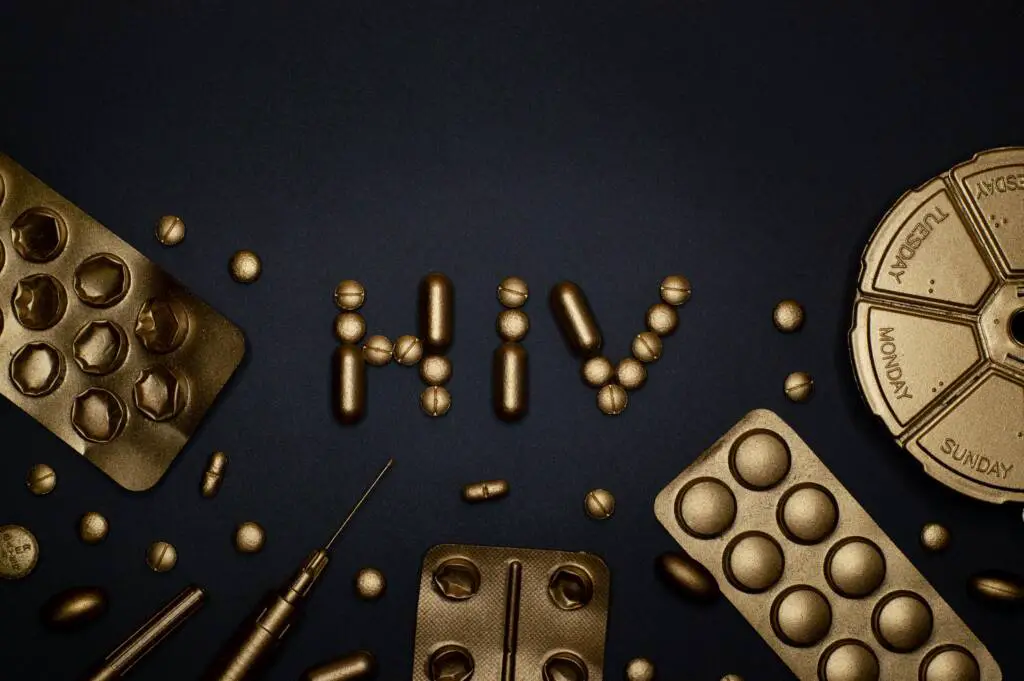Understanding HIV Transmission

HIV is a viral infection that affects millions of people worldwide. Despite advancements in treatment and prevention, it continues to be a major health concern. In this comprehensive guide, we aim to provide accurate and up-to-date information about HIV transmission and prevention. It is crucial to understand the basics of this disease and how to protect ourselves and others from it.
This article dispels common misconceptions and provides a deeper understanding of HIV and its impact on the body. We will also discuss the various methods of transmission and the importance of reducing risk factors. Additionally, we will explore the different prevention methods. Treatment options, and ongoing research efforts to combat HIV.
It is essential to have a comprehensive understanding of HIV to prevent its spread and provide proper care for those living with it. Let’s dive into the complexities of this disease and take the necessary steps towards a healthier and more informed society.
Understanding HIV and AIDS
HIV (Human Immunodeficiency Virus) is a virus that attacks the immune system. Making it difficult for the body to fight off infections and diseases. While there is currently no cure for HIV. Advances in treatment and prevention have made it possible for those living with the virus to lead long and healthy lives.
Contrary to popular belief, HIV and AIDS (Acquired Immunodeficiency Syndrome) are not the same. HIV is the virus that leads to AIDS. Which is the final stage of the disease when the immune system is severely weakened. However, with proper treatment and care, people living with HIV can prevent the progression of AIDS.
It is important to understand the basics of HIV to dispel common misconceptions and promote accurate information. Currently, approximately 38 million people are living with HIV globally, with nearly half of them unaware of their status. This is why education and awareness about this disease are crucial in preventing its spread.
Opportunistic infections and coinfections, such as tuberculosis and hepatitis, are common among those living with HIV. These can have a serious impact on the health of individuals, particularly if the virus is left untreated. Understanding how HIV attacks the immune system is essential in managing and treating these infections.
How the Transmission of HIV Occurs
HIV can be transmitted in various ways, including:
Unprotected Sex
Sharing Needles
Mother to Child During Pregnancy
Childbirth
Breastfeeding
The virus can also be transmitted through contact with infected blood, semen, vaginal fluids, and breast milk. It is important to understand that HIV is not transmitted through everyday activities such as hugging, kissing, or sharing dishes and utensils. However, open cuts or sores can increase the risk of transmission through these activities.
To reduce the risk of HIV transmission, it is important to use protection during sexual activity. Avoid sharing needles, and get tested regularly for HIV. It is also crucial to address the stigma and discrimination surrounding HIV. As it can prevent individuals from seeking testing and treatment. Additionally, educating yourself and others on the risk factors and ways to prevent HIV transmission can also help in controlling the spread of the virus.
Prevention Methods
Preventing HIV transmission is crucial in controlling the spread of the virus and protecting individuals and communities. Various methods of prevention have been proven effective in reducing the risk of HIV infection.
These include:
Safe sex practices, such as using condoms and limiting sexual partners, can greatly reduce the risk of HIV transmission through sexual contact.
Needle exchange programs provide clean needles to those who inject drugs, reducing the risk of HIV transmission through sharing contaminated needles.
Pre-exposure prophylaxis (PrEP) is a daily medication that can greatly reduce the risk of HIV infection for those who are at high risk.
It is important to note that these prevention methods are most effective when used consistently and correctly. Regular HIV testing is also crucial in preventing the spread of the virus, as it allows for early detection and treatment. Educating oneself and others about these prevention methods is key to reducing the stigma and discrimination surrounding HIV. By taking action and utilizing these prevention methods, we can work towards a future where HIV transmission is no longer a concern.
Treatment and Care
HIV treatment is crucial for managing the virus and maintaining a good quality of life. Antiretroviral therapy (ART) is the most common form of treatment for HIV, which involves taking a combination of antiretroviral drugs to control the virus and reduce its impact on the body. Medication adherence is essential for HIV treatment to be effective.
Monitoring viral load, or the amount of HIV in the blood, is also important in managing the virus. Maintaining a low viral load helps to keep the immune system healthy and reduces the risk of passing on the virus to others.
Managing other health concerns, such as tuberculosis and hepatitis, is also crucial for those living with HIV. Regular check-ups and screenings can help to detect and manage these conditions. Additionally, support services are available to help individuals cope with the physical and emotional challenges of living with HIV.
It is important to consult with healthcare providers before making any changes to HIV treatment. ART should not be discontinued without medical supervision. With proper care and treatment, people living with HIV can lead healthy and fulfilling lives.
HIV and Other Health Concerns
There are a few specific health concerns that are often associated with HIV. It’s important to understand these concerns and how they can impact those living with the virus.
1. COVID-19: As the world continues to grapple with the COVID-19 pandemic, it’s important to note that those living with HIV may be at a higher risk for severe illness from the virus. This is due to a weakened immune system. Individuals with HIV need to take extra precautions to protect themselves from COVID-19, such as wearing masks and practicing social distancing.
2. Pregnancy: Women living with HIV can still have healthy pregnancies, but it’s important for them to receive proper medical care and adhere to their HIV treatment. With proper care and precautions, the risk of mother-to-child transmission of HIV can be significantly reduced.
3. Other health concerns: People living with HIV may also be at a higher risk for other health issues, such as certain cancers and mental health concerns. Individuals need to discuss these concerns with their healthcare provider and receive appropriate screenings and treatment.
As we continue to learn more about HIV and its impact on the body, it’s essential to address these health concerns and provide proper care and support for those living with the virus.
Moving Forward
The progress made in understanding and preventing HIV transmission is a testament to the tireless efforts of scientists, healthcare professionals, and advocates. However, there is still much work to be done in combatting this disease and ensuring its prevention. We must continue to raise awareness and educate the public about HIV and its transmission. This includes dispelling myths and misconceptions, addressing stigma and discrimination, and promoting acceptance and support for those living with HIV. Organizations like the National AIDS Trust and the CDC provide opportunities for involvement and advocacy through conferences, Twitter chats, and other events. By staying informed and advocating for HIV prevention and care, we can work towards a future where HIV is no longer a threat to our communities. Remember, understanding HIV is the first step towards a world free from this disease.
Conclusion
In conclusion, HIV is a complex disease that has impacted individuals and communities around the world. Understanding how this virus is transmitted and the various prevention methods available is crucial in combatting its spread. By practicing safe sex, utilizing needle exchange programs, and considering pre-exposure prophylaxis (PrEP), we can reduce the risk of HIV transmission. It is also important to regularly get tested and seek early treatment if diagnosed with HIV. As we continue to make progress in understanding and treating this disease, it is important to address the stigma and discrimination surrounding HIV and support those living with it. Let us continue to raise awareness and educate others about HIV to create a world where everyone has access to proper healthcare and the freedom to live without fear of HIV. Together, we can make a difference and control the spread of this disease.
https://7thavewellnessblog.com/?p=135
https://www.ncbi.nlm.nih.gov/
FAQs
-What is HIV?
HIV stands for human immunodeficiency virus and is a virus that attacks the body’s immune system, making it difficult for the body to fight off infections and diseases.
-How is HIV transmitted?
HIV is primarily transmitted through certain bodily fluids, including blood, semen, vaginal fluids, and breast milk. It can be transmitted through unprotected sexual contact, sharing needles or syringes, and from mother to child during pregnancy, childbirth, or breastfeeding.
-Is HIV transmission preventable?
Yes, HIV transmission is preventable. Individuals can reduce their risk of contracting HIV by practicing safe sex, not sharing needles, and using precautions during pregnancy and childbirth.
-Can you get HIV from kissing or sharing drinks?
No, HIV cannot be transmitted through casual contact such as kissing, sharing drinks, or hugging.
-How soon after exposure can HIV be detected?
It can take up to 3 months for HIV to show up on a standard HIV test. However, newer tests can detect HIV as early as 2-4 weeks after exposure. It is important to get tested regularly if you engage in behaviors that may put you at risk for HIV transmission.







